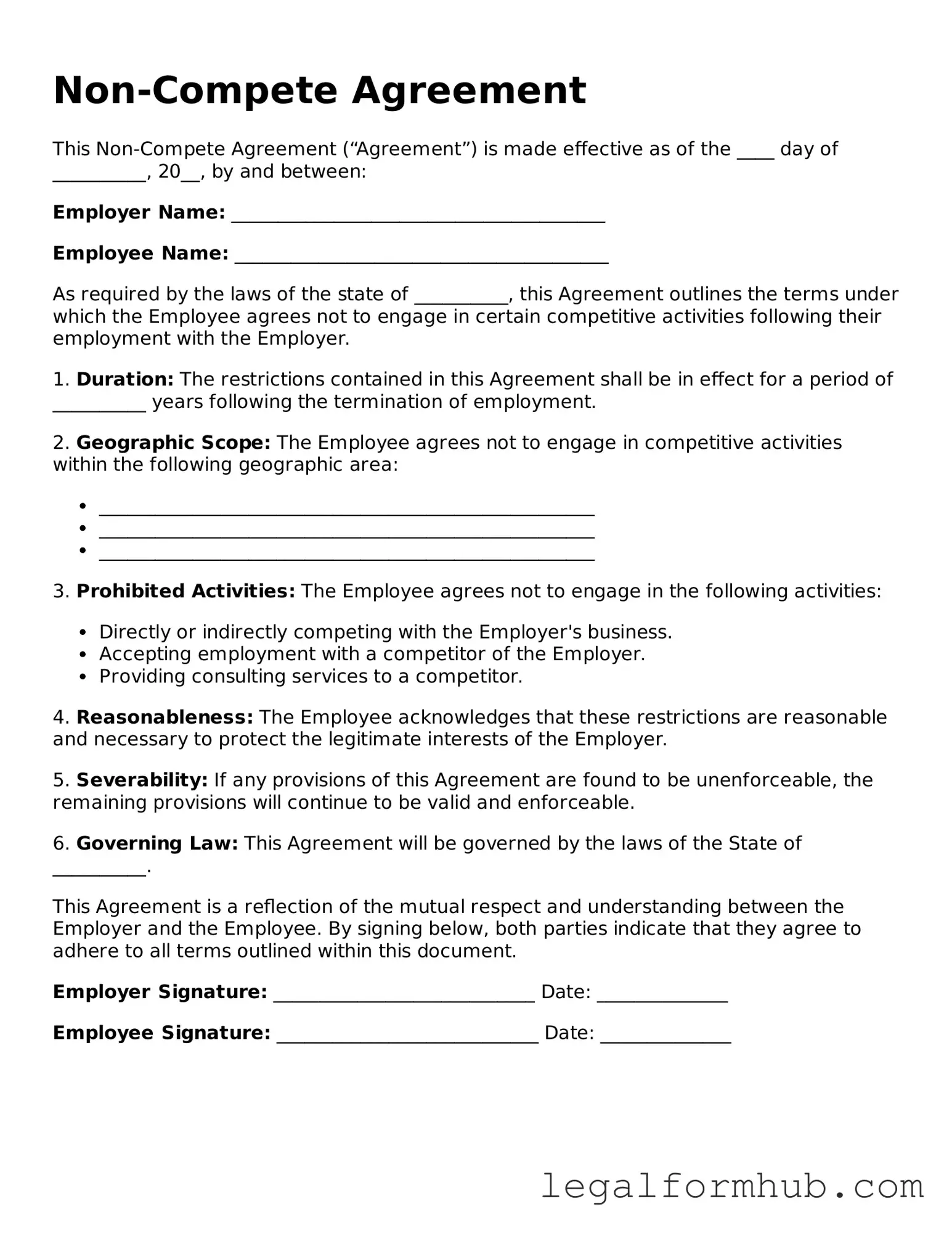Printable Non-compete Agreement Document
A Non-compete Agreement is a legal document that restricts an employee from working for competitors or starting a competing business for a specified period after leaving a job. These agreements aim to protect an employer's confidential information and business interests. Understanding the key components of this form is essential for both employers and employees to navigate the complexities of employment agreements effectively.
Open Non-compete Agreement Editor Here
